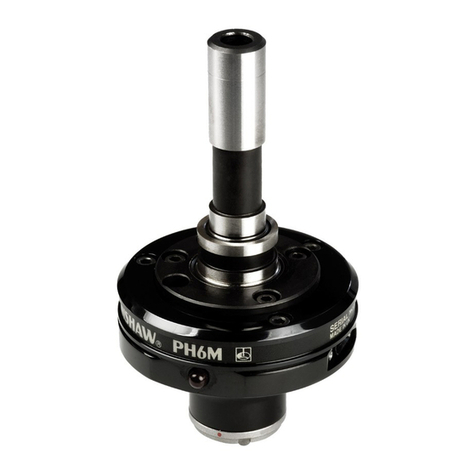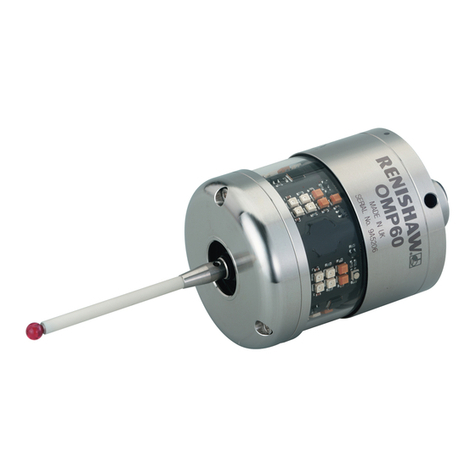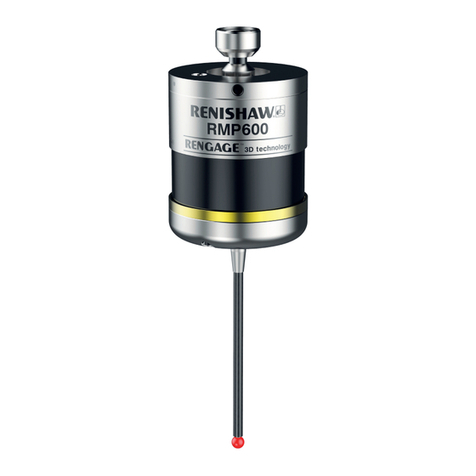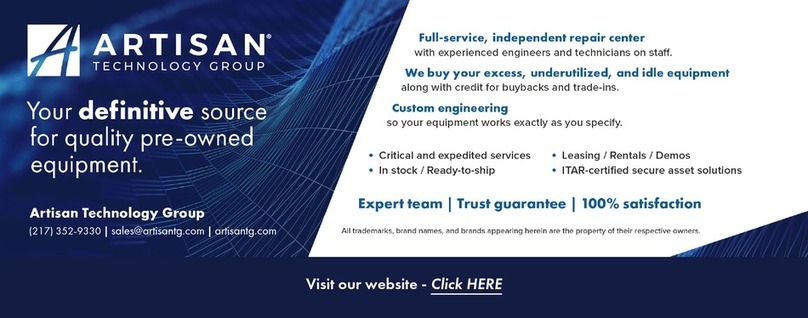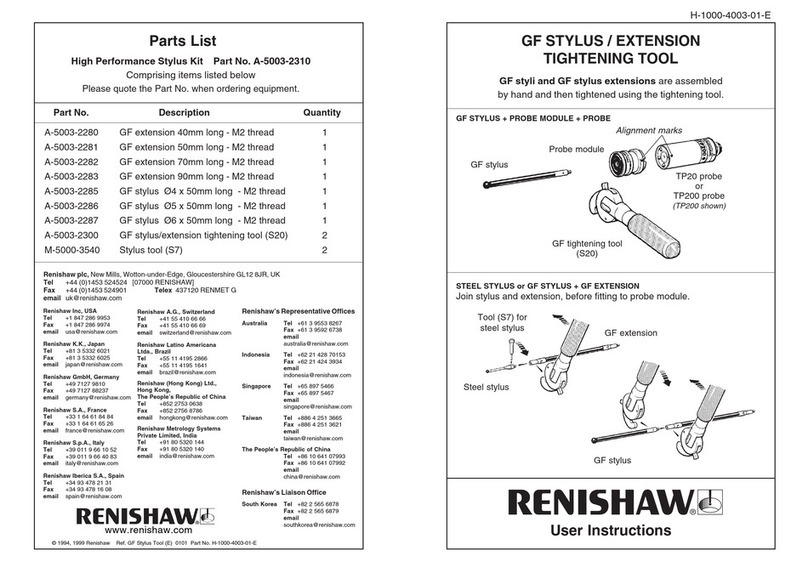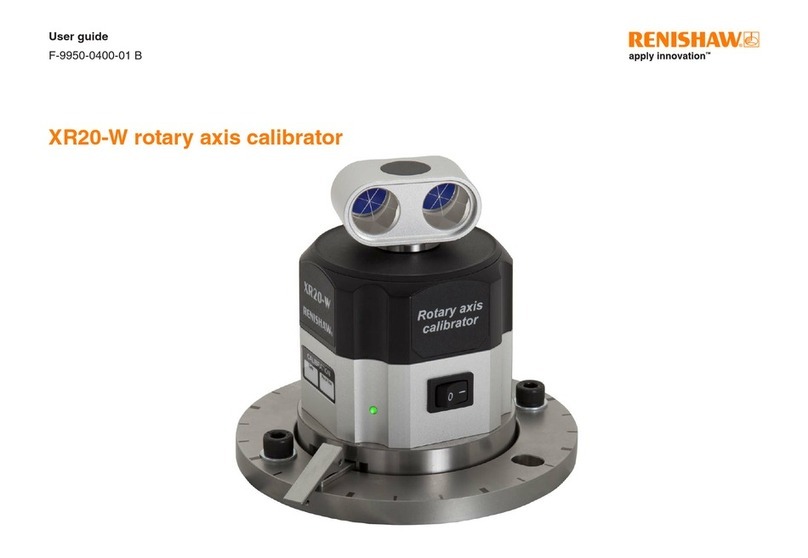
Safety information
WARNING: Use of controls or adjustments or performance of procedures other
than those specied herein may result in hazardous radiation exposure.
Ensure that you read and understand the XR20 user guide before using any
XR20 system.
The XR20 rotary axis calibrator can be used in a variety of environments and
applications. To ensure the safety of the user and other personnel in the vicinity,
it is therefore paramount that a comprehensive risk assessment is carried out
for the machine under test before using the XR20 rotary axis calibrator.
This should be carried out by qualied users (requiring machine competency,
applicable technical knowledge and a trained risk assessor) with consideration
for the safety of all personnel. The risks identied must be mitigated prior to
using the product. The risk assessment should pay particular attention to
machine, manual handling, mechanical, laser, electrical, power and bre optic
safety.
Based on current research, the wireless devices used in this product would
not seem to pose a signicant health risk for the vast majority of pacemaker
wearers. However, people with pacemakers may want to ensure a minimum
distance of 3 cm between the product and pacemaker.
Safety warnings
The XR20 rotary axis calibrator system is designed to be used to test machine
tools. As such, the user will need to prepare and run a part program which
moves the machine as required. Do not spin the optics. It is assumed
therefore that the user is thoroughly familiar with the operation of the
machine tool and its controller and knows the location of all emergency stop
switches. Also, if it is necessary to operate the machine with the guards or
any safety feature removed or disabled, it is the responsibility of the operator
to ensure that alternative safety measures are taken in line with the machine
manufacturer’s operating instructions or relevant codes of practice. Safety
procedures should be in accordance with the user’s risk assessment.
The XR20 device works in conjunction with a Renishaw laser system. Before
using the laser system, read the safety section of the relevant laser user guide.
The XR20 can reect the laser beam from the laser around the room as it
rotates. Consideration should be given to other users working in the area.
If this equipment is used in a manner not specied by the manufacturer, the
protection provided by the equipment may be impaired.
9www.renishaw.com
